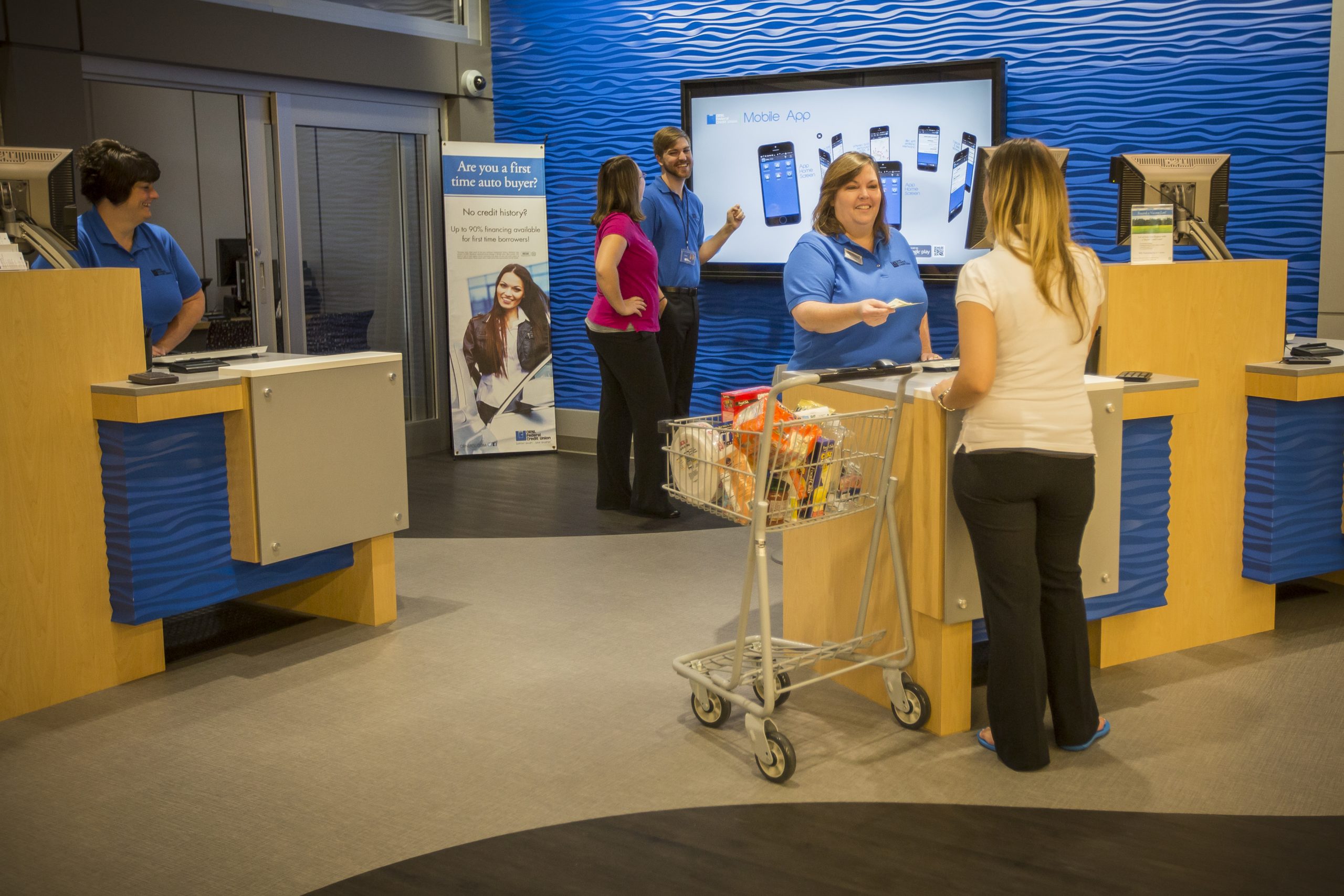The integration of banking services within supermarkets is once again becoming an increasingly popular trend. These branch placements allow financial institutions an opportunity to reach customers in convenient, high-traffic environments. If you’re contemplating placing a branch in a supermarket, there are several key considerations to ensure success. Here’s a guide to help you navigate this innovative approach to retail banking.
1. Location is Key.
Choosing the right retail partner and securing a visible location within the store is critical to the branch success. Taking time to analyze foot traffic patterns and customer demographics is a great indicator of how the in-store branch will perform. For example, spots near the entrance or popular sections, such as the deli, pharmacy or checkout lines, where customers are likely to congregate are ideal. Proximity to these areas enhance visibility and draw in potential clients. Working with a consultant to provide location options and market intelligence is key.
2. How Are In-Store Branches Different from Traditional Branches?
Smaller scale branches succeed by using fewer staff members and incorporating more automated services. Self-serve technology and more streamlined processes helps employees focus on relationship building and offering a more tailored financial approach.
3. Understand your Customer/Member Base.
Every supermarket serves a unique demographic drawing from a typical 5-mile radius. Conduct thorough market research to understand the specific needs and preferences of the local community. Are customers primarily families, young professionals, or retirees? Tailor your banking services and marketing strategies to meet the distinct financial needs of these groups. Offering personalized financial products can foster customer loyalty and increase engagement.
4. Design for Accessibility & Comfort.
The design of your in-store branch should promote a welcoming and accessible environment. Therefore, an open layout can facilitate organic interactions between staff and customers, while comfortable seating areas encourage visitors to stay longer. Integrate self-service kiosks and automated teller machines (ATMs) to streamline transactions and free up staff for consultative services.
4. How to Increase Sales in a Supermarket Branch?
To maximize profitability, consider shifting your focus to consultative offerings instead simply transactional services. Automate as many routine processes as possible with ATMs and Interactive Teller Machines (ITMs) so that your employees can dedicate their time to providing personalized financial support. Ensure that all staff members are well-versed in the full range of products and promotions available, enabling them to recommend relevant solutions tailored to each visitor’s unique financial situation.
5. Focus on Technology Integration
Incorporating technology can enhance customer experience and operational efficiency. Utilize digital signage for promotions and product information, and consider implementing interactive tools that engage customers. Self-service options allow clients to handle routine transactions quickly, enabling your staff to focus on more complex inquiries and relationship-building.
6. Hiring, Staff Training, & Development
Your team is the face of your bank or credit union branch. Hiring the right individuals is key. They must be able to handle the investment of comprehensive training that emphasizes customer service and product knowledge. Employees should be equipped to provide personalized advice and recommendations tailored to individual needs. Building a knowledgeable and friendly team will encourage repeat visits and positive word-of-mouth referrals.
7. Evaluate Compliance and Regulatory Considerations
Navigating the regulatory landscape is crucial when establishing a bank branch in a supermarket. Ensure compliance with all banking regulations and guidelines, including those specific to in-store operations. Engaging legal counsel and regulatory experts can help streamline this process and avoid potential pitfalls.
8. Monitor and Adjust
Once your branch is operational, continuously monitor performance metrics and customer feedback. Analyzing transaction data and customer engagement can provide insights into what’s working and where improvements are needed. Be prepared to adapt your offerings and strategies based on this feedback to enhance customer satisfaction and profitability.
By considering these key factors, you can successfully establish a bank branch within a supermarket, creating a valuable service for customers while driving growth for your financial institution. As the landscape of banking continues to evolve, being at the forefront of innovation can set you apart from the competition. Happy planning!
For more information or to explore the option of a Supermarket Bank branch for your financial institution, contact us or view our in-store branch gallery.



Leave a Reply